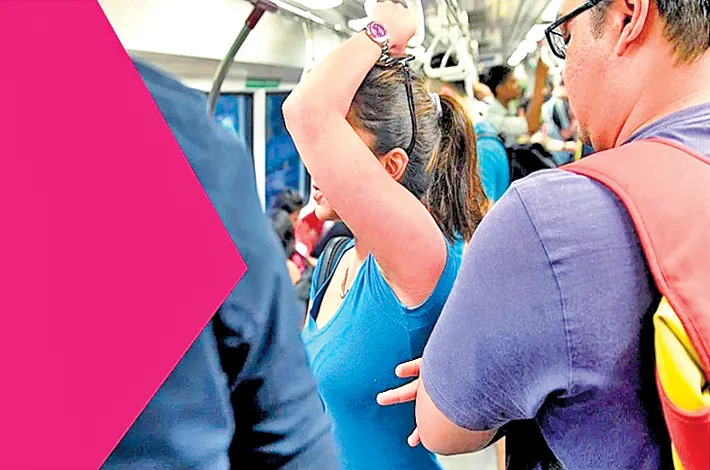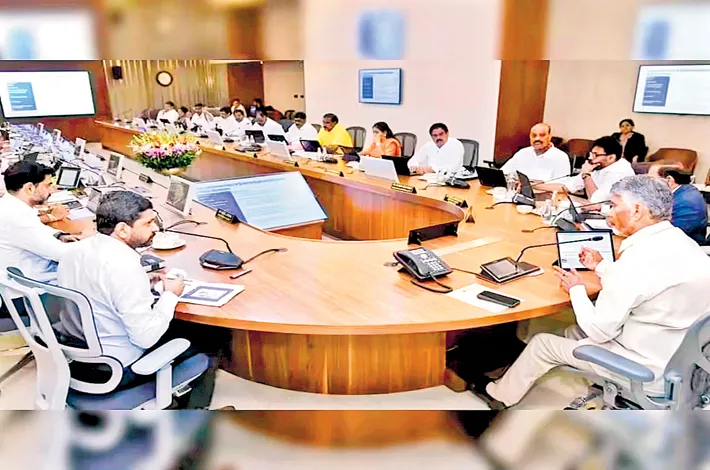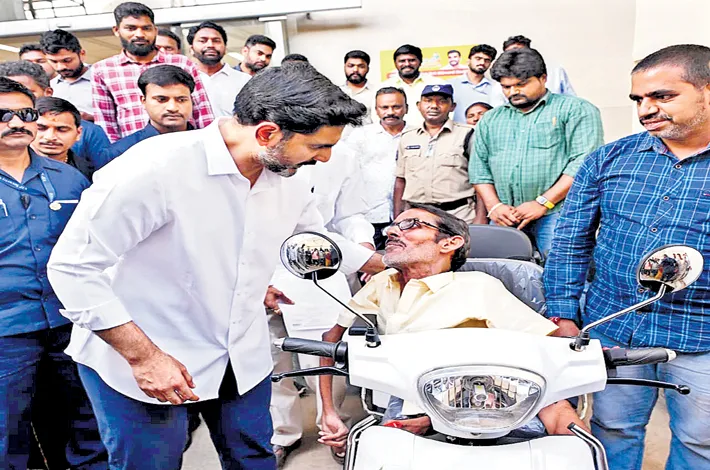It’s nightmare for women travelers
12-11-2025 12:00:00 AM

Women face predatory staring, groping and verbal abuse
hema singuluri I hyderabad
Life in a metro train, especially for women is an ordeal. Staring, groping, passing lewd comments are a daily affair. A female commuter travelling from JNTU to Ameerpet shared, “A man in his 40s sat beside me and repeatedly brushed his elbow.
Imoved to another coach after giving him a dirty stare, but the moment still haunts me.” (Name withheld on request). Revathy Krishnan, 32, a medical transcriptionist says, “I dread travelling on a Friday during the night. The trains are packed as many leave the city for their hometowns for the weekend. There is greater risk of being groped.
Everyday journeys are filled with anxiety, fear, and helplessness. In the city’s crowded metro compartments where commuters can barely move, safety has become a serious concern specifically while travelling through areas like LB Nagar, Miyapur, JNTU, Ameerpet, Raidurg. The harassment is on rise and one cannot complain as there is every possibility that the perpetrator would blame it on crowded trains.
A male college student travelling towards Miyapur describes a man in his 30s passed by and touched me inappropriately and left for the next coach. He said reporting to police felt like an option he could not pursue “I don't have the energy to go through the legal system and bureaucracy. I know I could have confronted him directly, but people can easily say I am lying, or it was an accidental touch.”
A female college student shared a similarly nauseating incident. “During peak hours, I saw a man deliberately rubbing himself against a woman in the crowd. The woman, tried to ignore it,” she said. A 22-year-old working woman described being touched multiple times in a congested coach and only realizing the pattern later. She said the “women coach” is at times occupied even by men. There is no one inside the metro train to complain.
Looking back, India once seemed safer for women in public spaces. In 1974, local commuters in Gujarat’s Baroda travelled together without needing special seats for women and yet decency was preserved, and harassment was rarely heard of. Two decades later, in 1994, Pune’s busiest lanes would still see women comfortably riding scooters past midnight without fear.
As the nation advances technologically and economically, moral decay and disregard for women’s safety seem to have dipped. Cases of harassment have moved beyond isolated incidents, and now occur daily, leaving women anxious even during regular commutes. Decades of progress in infrastructure have not been translated into progress in public behavior.
According to Hyderabad’s SHE Team and the Women Safety Wing, complaints reach them via helplines, WhatsApp/HawkEye/T-SAFE apps, social media or directly at police stations. Immediate advice to victims includes informing on-board staff, pressing emergency call buttons, or calling 100/112. Metro authorities and operators insist that infrastructure exists, designated ladies-only coaches, emergency buttons inside coaches,
24×7 CCTV coverage linked to a central control room, public address systems, and station staff/security personnel. But several commuters and recent local surveys say monitoring quality depends on staffing and workload; enforcement is inconsistent and many women feel the systems on paper are not translating into reliable protection on the ground.
Commuters demand visible enforcement of women-only coaches, more female security personnel during nights, active monitoring of CCTV feeds, better lighting and frequent public announcements.
THE SAFE APP underused
Digital tools exist but remain underused. Telangana’s T-SAFE platform, promoted by the Women Safety Wing, provides SOS alerts, live location sharing, fake-call features and the ability to record audio/video and Telangana has integrated T-SAFE with third-party ride platforms, so police receive instant ride and location details when SOS is pressed.
Yet awareness is limited; press demonstrations have been staged, for example at Ameerpet station, to showcase these integration and features. However, many commuters do not know about the app.








